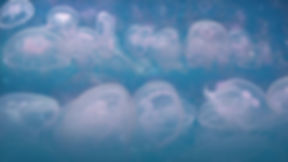Breaking Down Barriers

One of the things I remember most about riding the school bus as a kid was the first aid kit. Well … that and the rules for behavior which were mostly ignored. The first aid kit, packed I’m sure with band aids, gauze, medical tape, smelling salts …etc. was made of metal, was white with a red cross on the front, and boldly marked FIRST AID. The kit served the very simple and obvious purpose to offer means by which to aid in dressing any wounds that occurred while riding the bus. This was such a simple yet effective tool for the bus driver. Now as an adult and mother of three, I can well imagine the comfort and peace of mind it offered both adult and children on the bus.
Thanks to an initiative between local counsel of New South Wales (NSW) and the environmental group Sea Sheppard Australia has taken the simple concept of the first aid or emergency kit and created one for the sole purpose of aiding victims of shark bites, the same peace of mind will soon be offered to beach goers of NSW.
The Shark Attack Pack will be trialed in September at Wategos Beach, near Byron Bay. The pack, which costs around $100, will include bandages, tourniquets and emergency blankets. That may seem a bit limited considering it is going to save a person who has been bitten by a shark. However, the kit is designed to be placed at remote locations where it can take time for medical response teams to arrive. Considering most victims of shark bites die from extreme blood loss rather than the bit itself, these packs will play a vital role in life or death situations.
Now what about those bus rules that were mostly ignored? Up until now the main course of action to preventing sharks from interfering with human activities has been shark determent methods, some harmful and some not so harmful. One particular technique is setting up barriers or nets preventing sharks from swimming into a designated area. Expecting a shark to abide by parameters of where they can or cannot swim is similar to the rules on the bus that kids never followed.
Shark barriers or nets have been a controversial answer to shark determent since its inception. Nets are installed across the length of a designated area in hopes to prevent sharks from going into poplar recreational swimming and surfing spots. The problem with the nets in the past is that smaller creatures, for example turtles, get tangled in the nets and die. This includes sharks. More modern eco-friendly barriers have been designed; however, the question remains whether or not they are accident proof so the controversy continues.
Just this past November, in response to an incident where a junior surfing champion was bitten in the leg, the NSW government ordered the construction of a shark barrier at Ballina's Lighthouse Beach. The shark barrier has raised controversy among surfers and conservation groups. While conservation groups refute barriers because they are harmful to sharks and by catch, surfers are concerned they will become entangled, leading to injury or drowning. Some further question whether or not a thorough risk assessment has been done.
Contrary to Ballina’s solution of a shark barrier, Byron Bay chose the first aid kit. Byron Shire Council Mayor Simon Richardson says the shark packs, combined with shark spotting efforts, are a better fit for their area than artificial barriers. “Our community views the ocean with wonder and respect ... focusing on spotting sharks, not impeding or interfering with them aligns with our values,” he said. This perspective deserves a standing ovation! Sharks and humans need to peacefully coexist and it is this kind of mindset that is going to lead to viable solutions.
Natalie Banks, national shark campaign coordinator for Sea Shepherd Australia, says the pack is the first of its kind in Australia and hopes they can be rolled out throughout the region. There are plans to hold training sessions to teach people correct medical techniques. Sea Shepherd Australia will have the first pack on hand at Wategos Beach during a two-week shark spotting trial in September.
In order to aid in preventive measures for the depopulation of sharks, the oceanic world needs alternative solutions exampled by Shark Pack, shark spotting, listening stations, etc. We also need to encourage and commend such efforts exhibited by Sea Sheppard Australia and the local government of Byron Bay and their leading example of how to coexist effectively with the sharks.




















